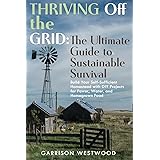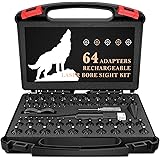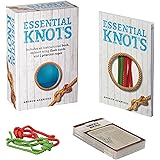Primitive Technology: Foraging & Cooking Coconut Worms for Wilderness Survival
In the wild, securing a reliable food source often presents a significant challenge. Traditional methods of hunting and gathering require specialized knowledge and adaptable skills, which are crucial for self-sufficiency. As skillfully demonstrated in the accompanying video, the focused search for and preparation of coconut worms illustrates an ingenious solution to this universal wilderness dilemma, offering a surprisingly nutritious and readily available option for those with the know-how.
The Allure of Edible Insects in Survival Scenarios
The concept of consuming insects, known as entomophagy, has been embraced by various cultures across the globe for millennia. It is estimated that over two billion people worldwide routinely incorporate insects into their diets, a practice often overlooked in Western societies. In a survival situation, however, the availability and nutritional density of edible insects like the coconut worm are considered invaluable resources.
Insects are frequently lauded as a sustainable and protein-rich food source. Studies indicate that many insect species, including various larvae, contain a comparable or even higher percentage of protein per gram than conventional meats such as beef or chicken. This nutritional profile, alongside their healthy fat content and essential micronutrients, makes them an incredibly efficient option for sustaining life in challenging environments. The ability to identify, forage, and prepare these small creatures is a skill that can greatly enhance one’s chances of thriving, not just surviving, in the wilderness.
Identifying Coconut Worm Habitats and the Red Palm Weevil Larvae
Coconut worms, scientifically identified as the larvae of the red palm weevil (Rhynchophorus ferrugineus), are commonly found within the decaying trunks of various palm trees, most notably the coconut palm. These grubs are considered a delicacy in many tropical regions, but their primary value in a survival context lies in their accessibility.
The presence of these larvae typically indicates that a palm tree has either recently fallen, been damaged, or is in an advanced state of decay. Signs such as sawdust-like frass extruding from the trunk, holes bored into the wood, or a general decline in the tree’s health often signal a potential habitat. It is within the soft, fibrous interior of these decaying logs that the succulent larvae are nurtured, protected from predators, and accumulate their rich nutritional reserves. Careful observation of the surrounding environment is paramount when searching for these prime foraging locations.
Safe and Sustainable Extraction Techniques
Once a promising palm log is identified, the process of extracting the coconut worms must be approached with both efficiency and respect for the environment. The video illustrates a direct and focused method for accessing the grubs. Typically, the outer layers of the decaying palm wood are carefully peeled away or split open using primitive tools, such as sharpened sticks or rocks.
The goal is to expose the inner, softer wood where the larvae reside. These creamy-white, plump grubs are often found in clusters, burrowing through the decaying material. When collecting, it is advised that the surrounding ecosystem be disturbed as minimally as possible. A sustainable approach ensures that some larvae are left behind, allowing the population to regenerate, which is considered a key principle of responsible foraging. Care must be taken to avoid any other insects or creatures that might also inhabit the decaying wood, ensuring only the target species is collected.
Nutritional Powerhouse: Why Coconut Worms Matter
The nutritional benefits of coconut worms are substantial, positioning them as an excellent survival food. These larvae are particularly noted for their high fat and protein content, which are essential macronutrients for energy and muscle maintenance in strenuous conditions. A single large coconut worm can contain a significant amount of calories, offering a concentrated energy boost when other food sources are scarce.
Beyond macronutrients, coconut worms are also understood to be rich in various micronutrients. These include essential vitamins and minerals, such as iron, zinc, and B vitamins, which play critical roles in bodily functions and overall health. For instance, studies on similar edible larvae have shown iron content comparable to beef, helping to prevent fatigue and maintain cognitive function. The consumption of such nutrient-dense foods becomes especially critical when a varied diet cannot be maintained, making coconut worms a truly valuable find for any wilderness explorer.
Preparing Your Wilderness Delicacy: Cooking Methods
While coconut worms can technically be eaten raw, they are typically preferred cooked, both for taste and safety reasons. Cooking is known to enhance their flavor, often described as nutty or buttery, and also helps to eliminate any potential pathogens that might be present. Various preparation methods can be employed, depending on the available tools and resources in a wilderness setting.
One of the most straightforward methods involves roasting them over an open fire, as might be inferred from the practical application shown in the video. The grubs are often skewered or placed directly onto hot coals until they become golden brown and slightly crispy. Alternatively, they can be boiled, fried in a makeshift pan, or even steamed in leaves. Each method imparts a slightly different texture and flavor. It has been observed that the fat content of the worms allows them to cook quickly and sometimes even render their own cooking oil, adding another layer of versatility to their preparation.
Ethical Foraging Practices for Future Sustainability
The practice of foraging, particularly for unique food sources like coconut worms, necessitates a strong commitment to ethical and sustainable practices. The long-term availability of these resources depends heavily on responsible collection methods. It is understood that foragers should always strive to take only what is needed, leaving enough of the population to ensure continued regeneration. This principle is fundamental to preventing over-harvesting and maintaining ecological balance.
Furthermore, careful consideration should be given to the impact on the surrounding environment. Disturbing large areas or causing unnecessary damage to other plant and animal life is discouraged. Knowledge of local regulations, if applicable, regarding foraging is also important, even in remote areas. By adhering to these guidelines, the tradition of utilizing nature’s bounty, including valuable resources like coconut worms, can be sustained for future generations of wilderness enthusiasts and survivalists.











